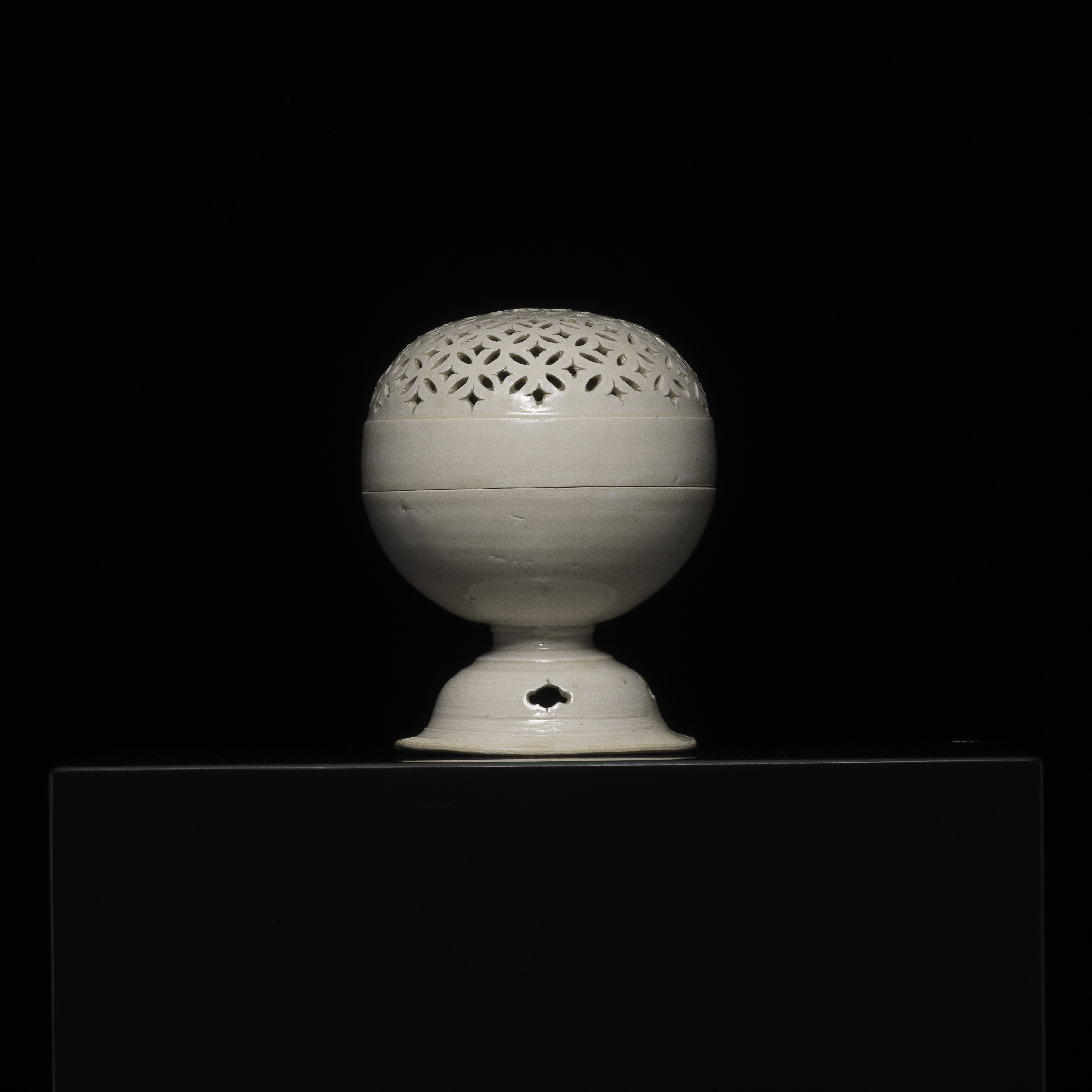A White-glazed DING Openwork Incense Burner in the Style of Archaic Bronze Ritual Vessel (Dou )
Northern Song Dynasty

- KILN:DING Kiln
- PERIOD:Northern Song Dynasty
- DIMENSIONS:Height 15.3 cm, Lid Diameter 12.3 cm, Rim Diameter 11 cm, Foot Diameter 10.04 cm
Introduction
With a plump-rim lid, the incense burner has a globular body perfectly matched up the upper half-sphere lid and the other half-sphere belly. The vault of the lid is carved with openwork of coin-pattern, also resembling geometric four-petal design to let the incense smoke drifting out. The burner’s body is attached to the girdled waist and a short neck, supported on a splayed pedestal formed in the shape of a compressed bronze bell and carved with openwork of begonia-shaped pattern along with embossed rings. The exterior of the burner is covered in white glaze; while the interior is exposed.
Dou, is a ritual vessel for holding offering food or meat; the globular Dou with a lid were widely used in the Warring States Period, which much resembles the incense burner appearing in the Han Dynasty, hence the name Dou-styled incense burner. Such type of burner exerted a profound influence on the later porcelain production not only in the North also in the Southern areas, like kiln YUE. An early celadon-glazed incense burner carved with floral patterns and lotus petals was excavated from the basement of the pagoda in the Temple Toutuo Lingshi in Huangyan District of Taizhou City, Zhejiang Province.


